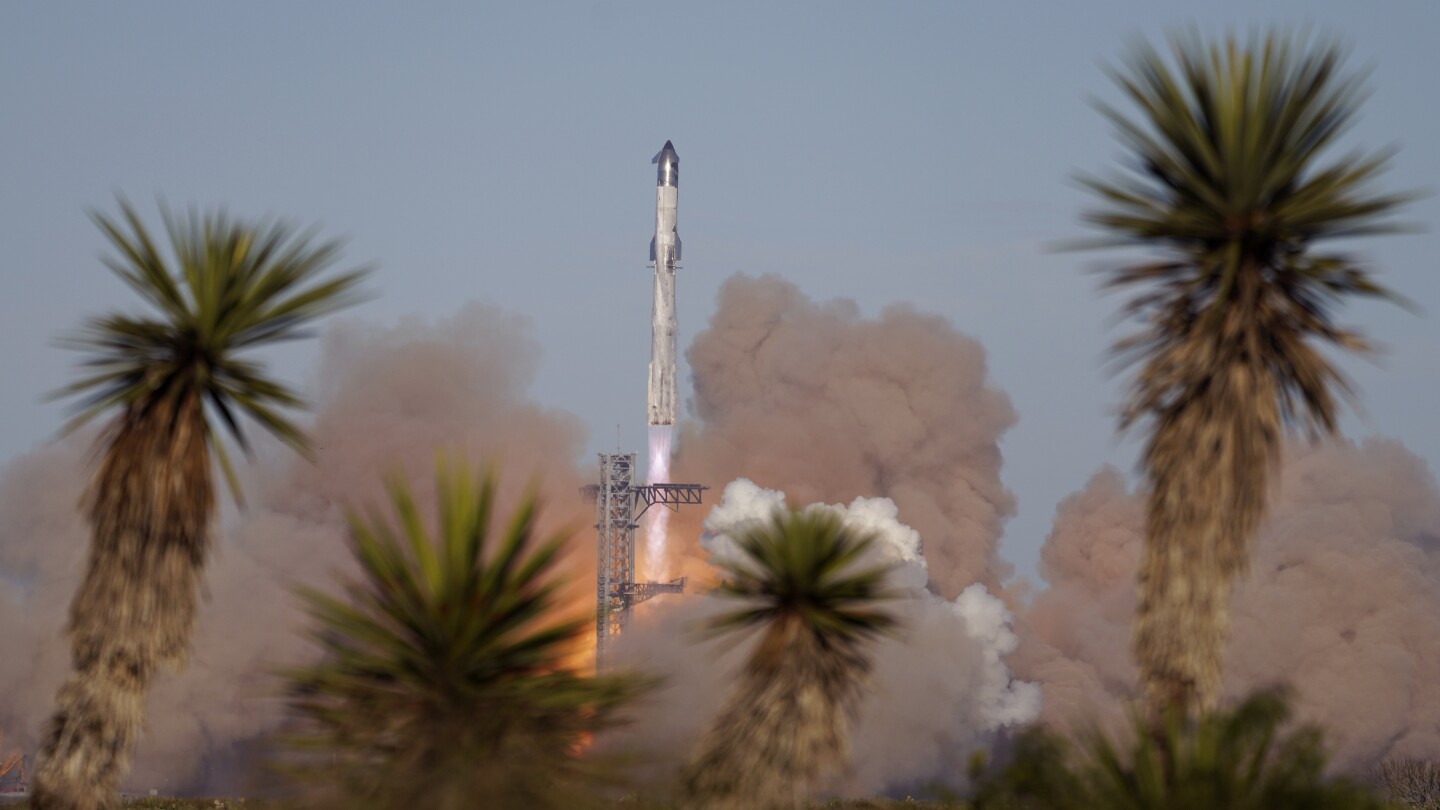Science
SpaceX loses spacecraft after catching rocket booster at the launch pad in latest Starship test

SpaceX’s Ambitious Starship Test Flight Ends in Mixed Outcomes
On a day marked by both triumph and tribulation, SpaceX’s latest test flight of its Starship rocket unfolded with a mix of excitement and disappointment. The event, eagerly anticipated by space enthusiasts, showcased the ambitious goals of Elon Musk’s aerospace company, despite encountering unforeseen challenges. The Starship, a next-generation spacecraft designed for deep space missions, including Mars exploration, took to the skies from Boca Chica Beach near the Texas-Mexico border. While the flight demonstrated remarkable engineering feats, it ultimately ended in the spacecraft’s disintegration, a setback tempered by successful elements of the mission.
A Promising yet Problematic Test Flight
The test flight began with the Starship blasting off, its ascent marked by the shutdown of its six engines in sequence, a critical issue that led to the spacecraft’s untimely demise. The mission aimed to soar across the Gulf of Mexico and nearly loop around the world, simulating the deployment of 10 dummy satellites. However, contact was lost just 8.5 minutes into the flight, at an altitude of 90 miles and a velocity of over 13,000 mph. The spacecraft, breaking apart, left a colorful trail of smoke observed by bystanders in the Turks and Caicos islands, a poignant reminder of both the beauty and fragility of space exploration.
A Historic Booster Catch Amidst a Bittersweet Moment
One of the mission’s highlights was the successful recovery of the rocket’s booster, a feat achieved using mechanical arms nicknamed "chopsticks." Despite this engineering triumph, the crowd’s enthusiasm quickly turned to disappointment as the primary spacecraft failed. SpaceX spokespeople emphasized the experimental nature of the test, acknowledging the setback but focusing on the lessons learned. This duality of success and failure underscored the inherent risks and iterative process in space exploration.
Analyzing the Failure, Paving the Way for Future Success
Preliminary analysis points to a fuel leak as the likely cause of the malfunction, with Musk outlining plans to enhance safety measures, including improved venting and fire suppression. This proactive response highlights SpaceX’s commitment to learning from each test, crucial for the Starship’s eventual manned missions, including NASA’s lunar objectives and the ultimate goal of Martian exploration.
Looking Ahead: Starship’s Role in Future Space Exploration
Despite the setback, the Starship program remains pivotal in SpaceX’s strategy, with plans to launch actual Starlink satellites followed by crewed missions. The spacecraft’s design for reusability and versatility positions it as a cornerstone for both satellite deployment and ambitious deep space ventures, embodying the company’s vision for a future where humanity is a multiplanetary species.
The Broader Landscape: Competition and Collaboration in Space
The launch occurred hours after Jeff Bezos’ Blue Origin successfully orbited its New Glenn rocket, albeit with a failed booster recovery. This juxtaposition highlights the competitive landscape in the space industry, where achievements and setbacks coexist. As companies like SpaceX and Blue Origin push the boundaries, the global space community benefits from shared knowledge and innovation, propelling humanity’s reach beyond Earth’s confines.